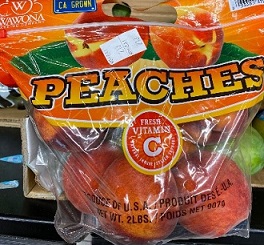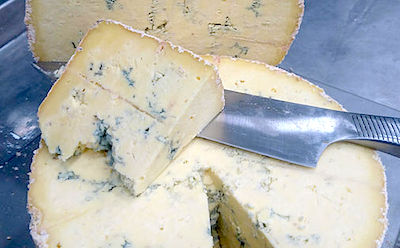The FDA has released a report on the investigation of Salmonella Enteritidis outbreak in peaches in the summer of 2020. The outbreak caused 101 reported illnesses across 17 states, including 28 hospitalizations. This appears to be the first time a Salmonella outbreak has been linked to peaches. While no test results matched the 2020 outbreak strain, four tests conducted on peach and peach tree leaf samples from an orchard adjacent to a poultry operation yielded positives for Salmonella Alachua, further linked to 2019 and 2020 chicken isolates. During the follow-up investigation, two tests of peach tree leaf samples collected from orchards adjacent to a cattle feedlot yielded positives for Salmonella Montevideo that were genetically similar via WGS to 2018-2020 beef and cattle isolates. The investigational findings reinforce the FDA’s concern about the potential impact that adjacent land uses can have on the safety of produce. The finding reinforces the need to implement appropriate science- and risk-based measures to improve the safety of fresh produce. The FDA encourages all growers to be mindful of and assess risks posed by adjacent and nearby land uses, including the potential impact of dust exposure. @ https://www.fda.gov/food/cfsan-constituent-updates/fda-releases-investigation-findings-following-summer-2020-outbreak-linked-peaches
ruth
While investigators did not find the outbreak strain, and the strains of Salmonella found during this outbreak were not linked to any clinical illnesses, the findings suggest that adjacent animal operations (both poultry and cattle) were likely contributing factors.
ruth
In the new study, published in the journal Science (Vol. 372, Issue 6547, pp. 1169-1175), scientists investigated Staphylococcus aureus and Pseudomonas aeruginosa that demonstrated resistance to multiple drugs. Their antimicrobial strategy targeted the bacterial hydrogen sulfide (H2S)–mediated defense system. The bacteria rely on the enzyme cystathionine gamma-lyase (CSE) to counter the toxic effects of bactericidal antibiotics (drugs that kill bacteria rather than just slowing their growth). The studies lead to the discovery of small molecules that inhibit bacterial CSE. CSE inhibitors also suppress bacterial tolerance to antibiotics, disrupting biofilm formation and reducing the number of persister bacteria that survive antibiotic treatment. The new molecules made bactericidal antibiotics two- to 15-fold more potent against the bacteria in Petri dishes. By tamping down hydrogen sulfide production, the inhibitors boosted the effects of antibiotics against microorganisms and suppressed bacterial tolerance. @ https://science.sciencemag.org/content/372/6547/1169
Persister cells, which are found in abundance in biofilms, adopt a quiescent state and survive antimicrobial treatments, seeding disease recurrence and incubating new resistance mutations. Building on work implicating the reactive small-molecule hydrogen sulfide in bacterial defense against antibiotics, Shatalin et al. conducted a structure-based screen for inhibitors of a bacterial hydrogen sulfide–producing enzyme and found a group of inhibitors that act through an allosteric mechanism (see the Perspective by Mah). These inhibitors potentiated bactericidal antibiotics in vitro and in mouse infection models. They also suppressed persister bacteria and disrupted biofilm formation. This strategy of taking out persister cells may be promising for treating recalcitrant infections and holding the line against drug-resistant bacteria.
Science , abd8377, this issue p. [1169][1]; see also abj3062, p. [1153][2]
Emergent resistance to all clinical antibiotics calls for the next generation of therapeutics. Here we report an effective antimicrobial strategy targeting the bacterial hydrogen sulfide (H2S)–mediated defense system. We identified cystathionine γ-lyase (CSE) as the primary generator of H2S in two major human pathogens, Staphylococcus aureus and Pseudomonas aeruginosa , and discovered small molecules that inhibit bacterial CSE. These inhibitors potentiate bactericidal antibiotics against both pathogens in vitro and in mouse models of infection. CSE inhibitors also suppress bacterial tolerance, disrupting biofilm formation and substantially reducing the number of persister bacteria that survive antibiotic treatment. Our results establish bacterial H2S as a multifunctional defense factor and CSE as a drug target for versatile antibiotic enhancers.
[1]: /lookup/doi/10.1126/science.abd8377
[2]: /lookup/doi/10.1126/science.abj3062
ruth
According to the FSA, Cheese On The Wey LTD has recalled Blue Millie Cheese (all packages/sizes up to and including 500 grams with a batch/lot code of 21/0415 and a use-by date of 02 July 2021) from the British marketplace due to suspected Listeria monocytogenes contamination. @ https://www.food.gov.uk/news-alerts/alert/fsa-prin-34-2021



